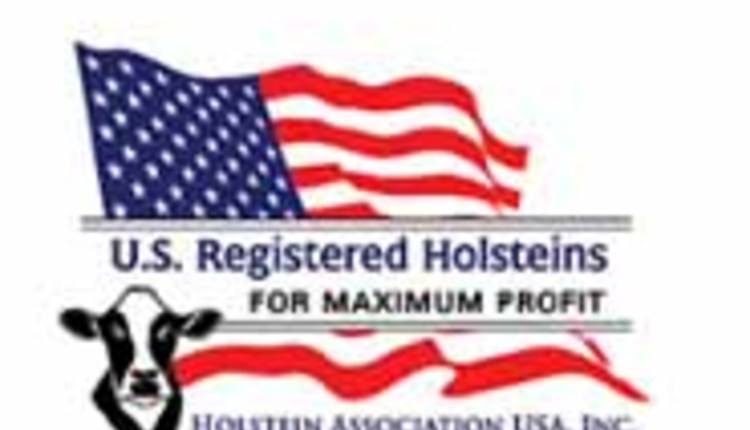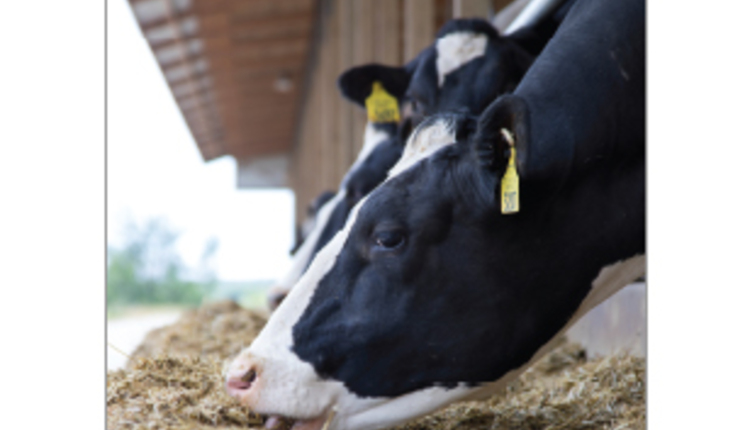
When profit margins shrink due to lower milk prices and/or higher input costs (especially feed), dairy owners may consider changing their feeding and management practices. Based on the economic challenges many experienced in 2007 and 2013, factors that can "build the milk check" are outlined below with guidelines and economic impacts.
Review each decision to determine if you can find additional income or reduce expenses on your farm or with your clients. Investigate whether you could make better long-term economic decisions.
Decision 1: Never give up milk. High-producing dairy cows convert 1 pound of dry matter to 2 to 2.5 pounds of milk. You have already met the cow's maintenance nutrient requirements (7 pounds of dry matter per day for Jersey cows; 10 pounds of dry matter per day for Holstein cows).
Economic impact: A pound of dry matter costs 13 to 16 cents. Two pounds of milk at 20 cents a pound results in 40 cents of income with a profit margin of 26 cents per pound of dry matter (14 cents per pound of dry matter used).
Decision 2: Produce optimal milk components for your breed. Most dairy managers are paid on a pounds or kilograms of milk solids (fat, protein and other solids) basis. Balancing your level of milk with desirable milk components can improve income.
Economic impact: If your Holstein herd averages 70 pounds of milk with milkfat that is 0.2 point below your herd's genetic potential and milk-true protein is 0.1 point below herd genetic potential, you are losing 48 cents per cow per day due to low milk components (based on June 2013 component prices).
Decision 3: Feed efficiency. Your herd should produce 1.5 pounds of 3.5 percent energy-corrected milk per pound of dry matter consumed. This metric can be used to determine if your herd is economically converting feed to milk efficiently.
Economic impact: If you can improve your feed efficiency from 1.4 to 1.5 through improvements to your feeding program, getting more cows pregnant, and/or lower somatic cell count (SCC), the profit boost is 42 cents per cow per day.
Decision 4: Getting cows pregnant. Low pregnancy rates lead to longer days in milk. Cows that do not calve frequently enough have longer days in milk with lower milk yields in their lactation cycle.
Economic impact: For each day beyond your optimal days in milk (for example, 170 days in milk), a loss of 0.25 pound of milk for each day can occur. If your herd is 200 days in milk, you could be losing 30 days of higher milk yield at 0.25 pound per day or 7 pounds of milk per cow.
Another guideline is $2 per day if cows are open longer than an optimal time in your herd (for example, 120 days). A cow open for 150 days could be losing 30 days at $2 per day or $60. The cost per day open swells between $5 and $7 per day as days open elevate.
Decision 5: Accelerated calf feeding program. Heifer calves should double their birth weight by weaning. Calves should receive 2 percent of their body weight as milk solids (80-pound calf would need 1.6 pounds of milk powder or milk solids). Higher levels of milk dry matter may reduce calf starter intake delaying her weaning time and performance.
Economic impact: Heifer calves on an accelerated program produce 1,100 to 1,600 pounds more milk in subsequent lactations. Plus, it bolsters their immune system.
Decision 6. Get heifers milking. Heifers should start their lactation by 23 to 24 months of age (younger for Jersey heifers). Until heifers are milking, you are not returning on your investment ($1,800 to $2,000) in these young animals. Holstein heifers should gain 1.6 to 1.8 pounds per day from birth until entering the milking herd.
Economic impact: For each day over 24 months of age or your optimal age at first calving, a loss of $2 per day (more when forage costs are high) occurs. If a heifer calves at 25 months of age, you have lost $60 on higher feed costs plus delayed income and no return on the heifer's investment.
Decision 7. Selecting feed additives. Feed additive investments can vary from 3 to 30 cents per cow per day. Be sure your herd meets the research-based criteria when selecting feed additives on your farm. My recommended feed additive list includes monensin (Rumensin), yeast products, silage inoculants, organic trace minerals, rumen buffers and biotin. These six feed additives were selected based on research results, economic return on investment, their function in the animal and field-based results.
Economic impact: If you select a feed additive with a benefit-to-cost ratio of 5 to 1, investing 6 cents for purchased feed additives results in a 30 cents return or 24 cents profit per responding cow per day.
Decision 8: Optimal mineral program. Macro and trace minerals are critical for proper growth, milk yield and immune function. These micronutrients fed at grams and milligrams per cow per day may seem unimportant, but do not shortchange the level and type of mineral.
Be sure to meet the mineral requirements for dry cows, lactating cows and growing heifers. For dry and open cows, adding an organic source of zinc, copper, manganese and selenium should be considered.
Economic impact: Based on the cost of not getting cows pregnant, not growing heifers at an optimal rate or reduced immune responsiveness (points 4 and 6 above), the economic impact of reducing or "buying a cheap mineral program" could lead to premature culling, lost milk production and additional health challenges (major economic impact).
Decision 9: Hoof health. Timely hoof trimming can reduce lameness, elevate pregnancy rates and lower culling rates. California work suggests that cows with a locomotion score 3 (arched backed and shorter walking gate) using the 1 to 5 scoring system produce 5 percent less milk, have a 3 percent lower dry matter intake, four times higher risk of becoming a score 4 cow (favoring one or more hooves) and are at an eight times greater risk to be culled.
Economic impact: The cost of a lame cow can be upwards of $122 per cow.
Decision 10. Lower somatic cell counts (SCC). Lowering SCC bolsters milk yield, reduces nutrient requirements and builds a favorable immune response (maintenance requirements can raise by 30 to 40 percent due to immune challenges).
Economic impact: For each linear SCC score decline, milk production may elevate 2 to 2.5 pounds at no additional costs. Plus, milk quality bonuses may also result.











